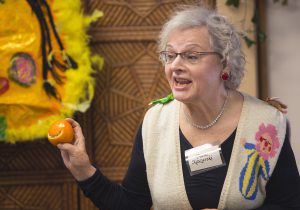Reviewed by Doris Friedensohn

Leonard Lauder’s memoir, The Company I Keep (HarperCollins, 2020), celebrates family and a storied, multi-billion-dollar family business. Now in his late ’80’s, the author still exudes an almost youthful passion for building the Estée Lauder Company. Lauder’s enthusiasm extends to family members, colleagues, employees–and even to competitors in the world of women’s cosmetics.
The story begins with the author’s mother, Estée, a beautiful blonde with boundless charm and a genius for self-promotion; at her side is his father, Joe, offering business skills and full support for his wife’s enterprise. From the family, Lauder moves outward–to others who set standards, taught lessons, occasionally lent a hand–even to competitors like Helena Rubinstein and Revlon. A paragon of energy, Lauder exudes goodwill, social smarts, and business savvy; he’s proud to be a tireless student. The Company I Keep describes “learning” to do, do better, and then do much better.
Lauder is “driven” by enthusiasm. It’s tempting to label his positive energy “American.” Maybe Ben Franklin looms in the background along with Emerson and FDR. Even more important than these models, I think, is the ease with self, the sense of growing up “supported” and valued–and the absence of serious doubts about what he cannot do or achieve. The roots of this confidence, the narrative suggests, are many and varied: a loving mother, a comfortable family, The Bronx High School of Science, time well spent in the Navy during the Korean War, and two adored and adoring wives.
In marketing Estée Lauder perfumes and skin products, Lauder and his team focus on rich women–and over time, those who emulate them. Lauder learns (easily, almost magically) to place the family’s scents and make-up in the very best stores, beginning with Saks Fifth Avenue in New York, and to make them appealing to the wealthy and their aspirational sisters. Of course, regular customers love the free, sample lipsticks and scents; they also appreciate the knowing chat of sales personnel. Training the sales staff, we learn, is as critical as finding the perfect color (blue) for bottling face creams. Once the company has established the standard, Lauder’s account of moving forward–expanding from France and England to Brazil, Mexico, and India–feels almost inevitable.
Mentioned not quite in passing is the New York boy, educated at Bronx Science, who avidly collected postcards and the savvy adult who bought the best Cubist paintings, knowing he would give them to the Metropolitan Museum of Art. Lauder has famously supported the Whitney Museum and less well-known institutions like the Studio Museum of Harlem, where his donations make a huge difference. What a charmed life! The philanthropist and cultural statesman at the end of this story is as memorable as the brilliant young businessman at the beginning. Even critics of the cosmetics industry can appreciate Leonard Lauder’s savvy, generosity, and vision!
Doris Friedensohn, professor emerita of Women’s Studies at New Jersey City University, is the author of the food memoir “Eating As I Go: Scenes from America and Abroad,” “Cooking for Change: Tales from a Food Service Training Academy” and “Airports are for Waiting and Other Traveler’s Tales.”


